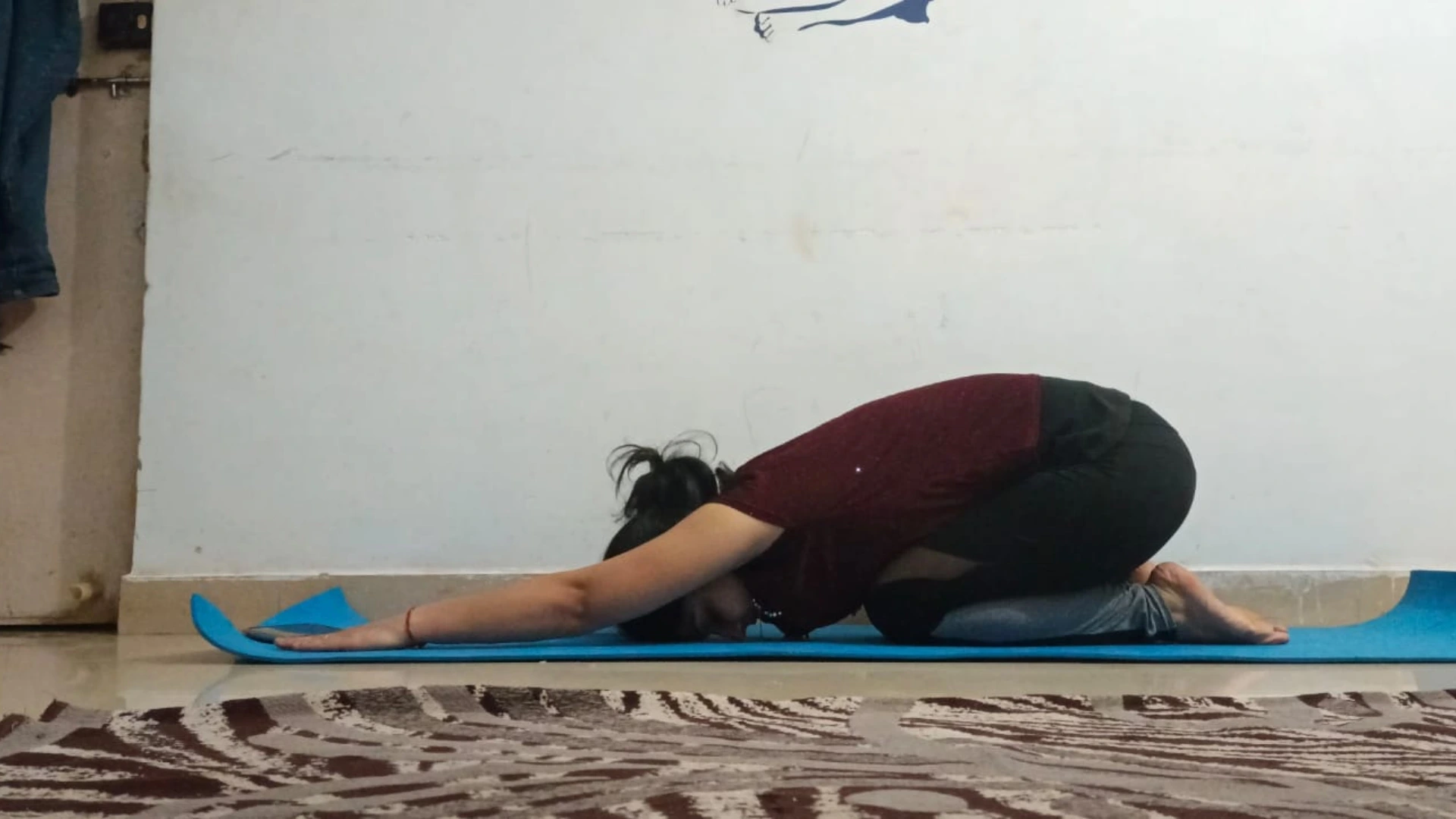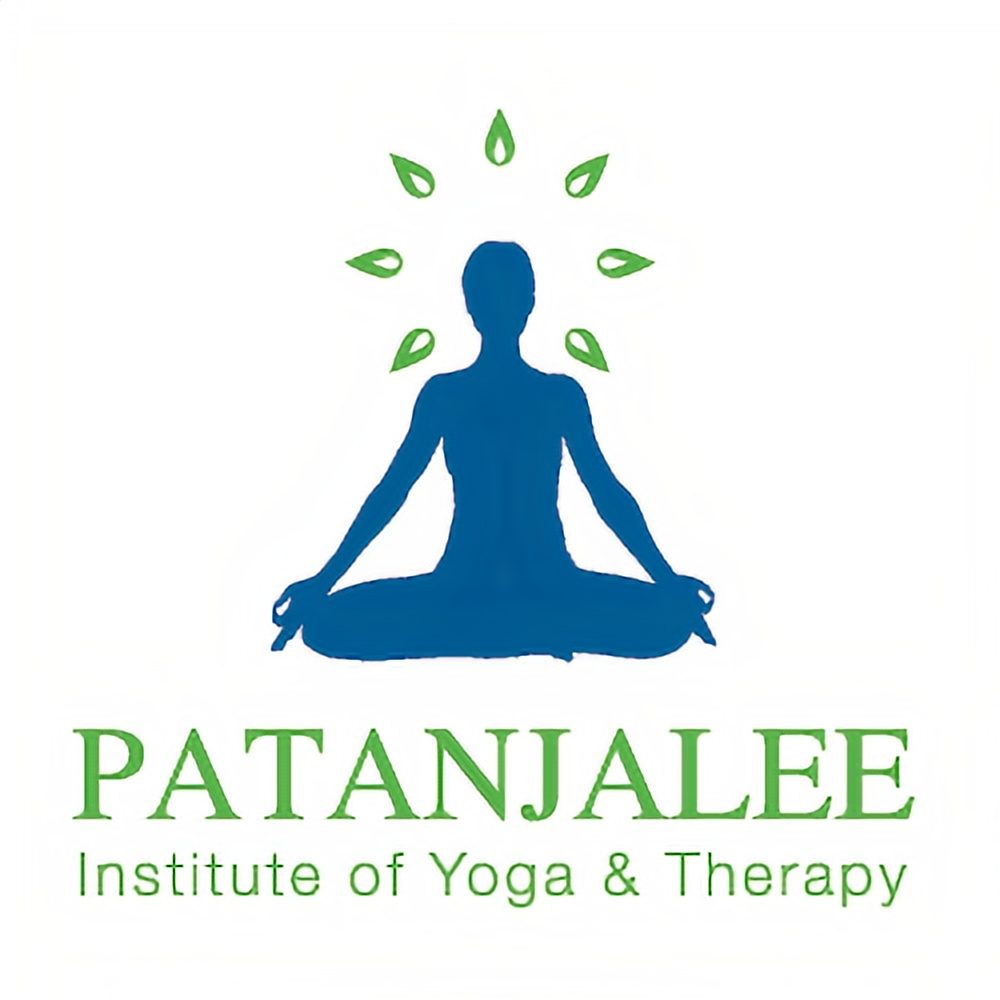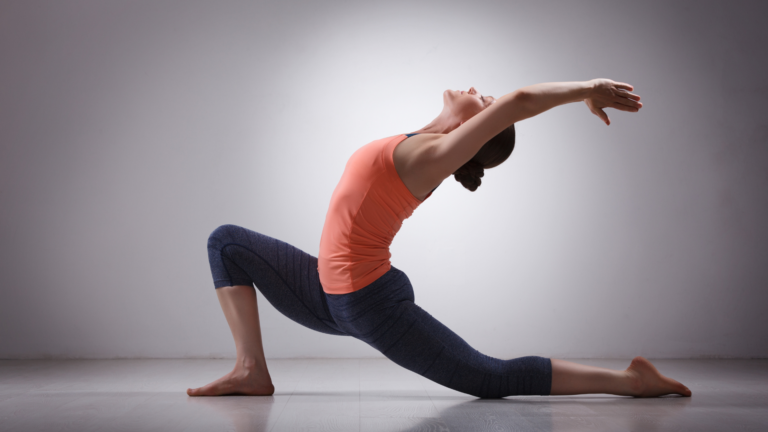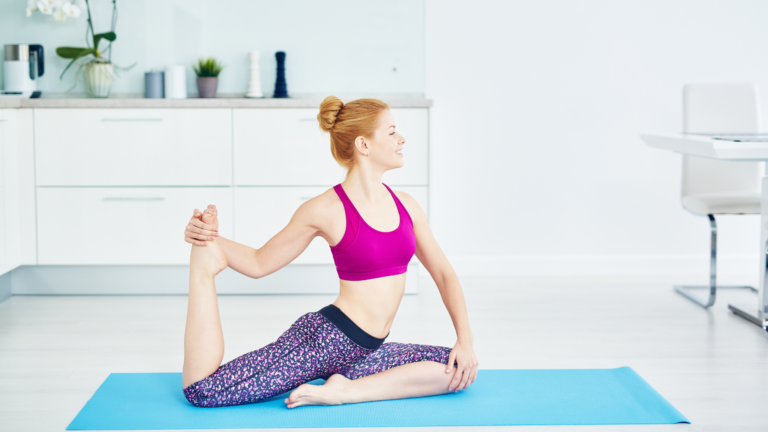Yoga For Relaxation And Stress Relief
In today’s fast-paced world, stress has become an inevitable part of our lives. Whether it’s due to work pressures, personal relationships, or societal expectations, stress can take a toll on our physical, mental, and emotional well-being. Around 77% of Indians showed signs of stress, and one in every three Indians was dealing with stress and anxiety. While there are various ways to manage stress, one ancient practice has stood the test of time for its effectiveness in promoting relaxation and reducing stress: yoga.
Yoga is more than just a series of physical exercises; it is a holistic approach to harmonizing the body, mind, and spirit. Through a combination of postures (asanas), breathing techniques (pranayama), and meditation, yoga offers a comprehensive toolkit for managing stress and achieving a state of deep relaxation. In this blog, we will explore the various aspects of yoga that contribute to relaxation and stress relief, backed by both ancient wisdom and modern scientific research.
Understanding Stress and Its Impact
Before delving into the specifics of how yoga can alleviate stress, it’s essential to understand what stress is and how it affects our bodies and minds. Stress is a natural response to challenging situations, triggering the body’s fight-or-flight mechanism. While short-term stress can be beneficial in certain situations, chronic stress can have detrimental effects on our health. It can lead to anxiety, depression, cardiovascular diseases, and a weakened immune system.
The Physiology of Stress
When we encounter a stressful situation, our bodies release stress hormones like cortisol and adrenaline. These hormones prepare us to deal with the perceived threat by increasing our heart rate, blood pressure, and energy levels. Once the threat passes, our bodies should return to a state of balance. However, in modern life, stressors are often continuous, causing prolonged exposure to stress hormones, which can disrupt this balance and lead to various health issues.
How Yoga Helps Combat Stress
Yoga offers a holistic approach to managing stress, combining physical postures, breathing exercises, and meditation to promote relaxation and mental clarity. Let’s explore the different aspects of yoga that make it an effective tool for stress relief.
Physical Postures (Asanas)
The physical aspect of yoga involves performing various postures, known as asanas, which help improve flexibility, strength, and balance. But beyond these physical benefits, asanas also play a crucial role in stress reduction.
1. Tension Release
Many yoga poses target areas of the body where we commonly hold tension, such as the neck, shoulders, and back. Poses like Child’s Pose (Balasana), Forward Bend (Uttanasana), and Cat-Cow Pose (Marjaryasana-Bitilasana) gently stretch and release tension in these areas, promoting a sense of relaxation.
2. Improved Circulation
Yoga enhances blood circulation, ensuring that oxygen and nutrients are efficiently delivered to the body’s tissues. Improved circulation can help reduce the physical symptoms of stress, such as headaches and muscle cramps.
3. Mind-Body Connection
Online yoga classes for stress encourages mindfulness and the development of a strong mind-body connection. By focusing on the sensations in your body and synchronizing your breath with your movements, you cultivate a sense of presence and awareness. This mindfulness can help break the cycle of stress and bring you into the present moment.
Breathing Techniques (Pranayama)
Breathing is a fundamental aspect of yoga, and pranayama refers to the practice of controlling the breath. Stress often leads to shallow and rapid breathing, which can exacerbate feelings of anxiety. Pranayama techniques help regulate the breath, inducing a state of calm and relaxation.

1. Deep Breathing (Diaphragmatic Breathing)
Deep breathing involves inhaling deeply through the nose, allowing the diaphragm to expand, and exhaling slowly through the mouth. This technique activates the parasympathetic nervous system, which counteracts the stress response and promotes relaxation.
2. Alternate Nostril Breathing (Nadi Shodhana)
Nadi Shodhana is a pranayama technique that involves alternating the breath between the left and right nostrils. This practice balances the two hemispheres of the brain, reduces stress, and enhances mental clarity.
3. Ujjayi Breath (Ocean Breath)
Ujjayi breath is performed by slightly constricting the back of the throat while breathing, creating a gentle, ocean-like sound. This technique helps calm the mind, increase focus, and maintain a steady flow of energy during yoga practice.
Meditation and Mindfulness
Meditation is a cornerstone of yoga practice and a powerful tool for stress relief. By quieting the mind and focusing on the present moment, meditation helps reduce anxiety and promote a sense of inner peace.
1. Guided Meditation
Guided meditation involves listening to a recorded voice or a teacher who leads you through a series of calming visualizations and affirmations. This can be especially helpful for beginners who may find it challenging to meditate on their own.
2. Mindfulness Meditation
Mindfulness meditation involves paying attention to your thoughts, emotions, and sensations without judgment. By observing your inner experiences, you can develop a greater sense of self-awareness and reduce the impact of stressors on your mind. Yoga not only reduces stress but also enhances sleep quality. Check out our blog, “How Does Yoga Improve Sleep? ” to know more.
3. Loving-Kindness Meditation
Loving-kindness meditation focuses on cultivating feelings of compassion and love for yourself and others. This practice can help alleviate stress by fostering a sense of connection and emotional well-being.

Creating a Yoga Routine for Stress Relief
Incorporating yoga into your daily routine doesn’t have to be time-consuming or complicated. Here are some practical steps to help you get started on your journey to relaxation and stress relief.
1. Set Aside Time for Yoga
Consistency is key when it comes to reaping the benefits of yoga. Set aside a specific time each day for your practice, even if it’s just 10-15 minutes. Morning or evening are often ideal times, as they can set a positive tone for the day or help you unwind before bed.
2. Create a Calm Environment
Choose a quiet, comfortable space for your yoga practice. Use a yoga mat or a soft carpet, and consider adding calming elements like candles, incense, or soft music to enhance the ambiance.
3. Start with Gentle Poses
If you’re new to yoga or feeling particularly stressed, start with gentle poses that promote relaxation. Here are a few beginner-friendly poses to try:
1. Child’s Pose (Balasana)
Child’s Pose is a restorative pose that stretches the back and promotes a sense of surrender and relaxation.

- Kneel on the floor with your big toes touching and knees spread wide.
- Sit back on your heels and stretch your arms forward, resting your forehead on the mat.
- Breathe deeply and hold the pose for several breaths.
2. Legs-Up-the-Wall Pose (Viparita Karani)
This pose helps calm the nervous system and relieve leg and lower back tension.

- Sit sideways against a wall and swing your legs up while lying back.
- Adjust your position so that your hips are close to the wall and your legs are resting vertically against it.
- Relax your arms by your sides and breathe deeply.
3. Cat-Cow Pose (Marjaryasana-Bitilasana)
Cat-Cow Pose is a gentle flow that warms up the spine and releases tension in the back and neck.


- Start on your hands and knees in a tabletop position.
- Inhale, arch your back (Cow Pose) and lift your head and tailbone.
- Exhale, round your spine (Cat Pose) and tuck your chin to your chest.
- Repeat the sequence several times, coordinating your breath with the movements.
4. Incorporate Breathing Techniques
Add pranayama practices to your yoga routine to enhance relaxation. Spend a few minutes before or after your asanas focusing on deep breathing or alternate nostril breathing. This will help calm your mind and prepare you for meditation.
5. End with Meditation
Conclude your yoga practice with a few minutes of meditation. Choose a technique that resonates with you, whether it’s guided meditation, mindfulness meditation, or loving-kindness meditation. This will help solidify the relaxation and stress relief benefits of your practice.
Yoga Nidra: The Ultimate Relaxation Practice
For those seeking profound relaxation and stress relief, Yoga Nidra, also known as yogic sleep, is an excellent practice to explore. Yoga Nidra is a guided meditation technique that induces deep relaxation and a state of conscious sleep.
What is Yoga Nidra?
Yoga Nidra is a systematic practice that guides you through different stages of relaxation, including body scanning, breath awareness, and visualization. It helps release deeply held tensions and promotes a state of restful awareness.
How to Practice Yoga Nidra
- Lie down in a comfortable position, preferably on your back with your arms by your sides.
- Close your eyes and take a few deep breaths, allowing your body to relax.
- Follow the instructions of a guided Yoga Nidra recording or a teacher, focusing on their voice and visualizations.
- Allow yourself to surrender completely, letting go of any tension or stress.
Yoga Nidra can be practiced anytime, but it is particularly beneficial before bed, as it can improve sleep quality and help you wake up feeling refreshed and rejuvenated.
Incorporating Yoga into Daily Life
Beyond structured online yoga classes practice, there are simple ways to incorporate yoga principles into your daily life to manage stress effectively.
1. Mindful Movement
Bring mindfulness to your daily activities, whether it’s walking, cooking, or cleaning. Pay attention to your movements, breath, and sensations, and perform each task with intention and presence.
2. Practice Gratitude
Take a few moments each day to reflect on the things you are grateful for. Gratitude can shift your focus from stressors to positive aspects of your life, promoting a sense of well-being.
3. Stay Connected
Nurture your connections with loved ones and your community. Social support is crucial for managing stress, and spending time with others can provide comfort and a sense of belonging.
4. Self-Care
Prioritize self-care activities that nourish your body and mind. This can include reading a book, taking a bath, spending time in nature, or pursuing a hobby you enjoy.
5. Practice Patience and Compassion

Be patient and compassionate with yourself as you navigate stress and practice yoga. Understand that it’s a journey, and it’s okay to have ups and downs. Celebrate your progress and be kind to yourself.
Conclusion
Incorporating yoga into your life can be a transformative experience, offering a sanctuary of relaxation and stress relief amidst the demands of modern life. Through physical postures, breathing techniques, meditation, and mindfulness, yoga provides a holistic approach to managing stress and promoting overall well-being. By dedicating a few minutes each day to your practice, you can cultivate a sense of peace, balance, and inner calm that will ripple through all aspects of your life. So, unroll your mat, take a deep breath, and embark on your journey to relaxation and stress relief with yoga.




